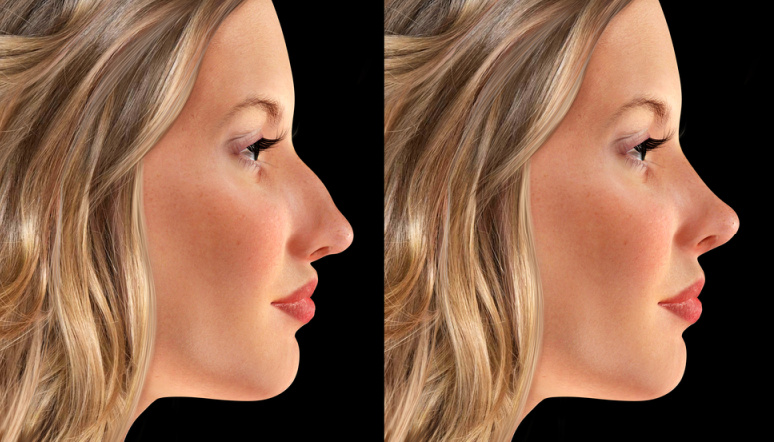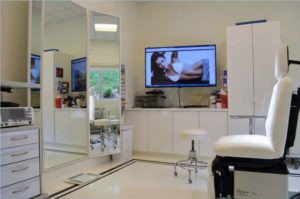Rhinoplasty comes from the Greek root rhino = nose and plastic from the Greek plastikos = to mold or to form. Rhinoplasty is a surgical operation that changes features of the nose for improved appearance (cosmetic) and also sometimes to improve nasal breathing. It’s important that the finest possible result is achieved, including smoothing the nose for the best rhinoplasty result. The value of the procedure is proportional to the quality of the result, and a nice rhinoplasty result may considerably beautify a face by aligning angles and proportions in a naturally aesthetic way.
For precision, surgeons often perform rhinoplasty with optical magnification to implement changes precisely and symmetrically. General anesthesia is preferred so the patient and nose are completely immobilized to facilitate precise work, and to avoid irritation if blood drips back into the nasal airway.
To change nasal size, shape, and aesthetics, nasal skin is lifted for exposure of the nasal skeleton which consists of cartilages and bones. These supporting structures determine nasal features. Parts of the nose are separated from surrounding tissues trimmed, moved, adjusted, and re-shaped to create the desired result. Then, bones and cartilages approximated and secured to one another to re-establish structural integrity of the nose, and secure a functional airway for breathing.
Sometimes when the skeletal components are re-united (approximated), bumpy edges that can be seen or felt. These irregularities may not be apparent to the patient until swelling resolves months after rhinoplasty surgery.
Our rhinoplasty innovation to avoid and prevent these irregularities and to avoid the need for a secondary rhinoplasty or rhinoplasty revision (revision rhinoplasty) is to smooth any and all bumps between bone and cartilage so the top and sides of the nose are very smooth and without contour changes that will absorb light to create visible shadows or reflect light for a visible edge. Four specific surgical techniques for smoothing the nose for the best rhinoplasty result:
- The Piezo (Mectron) ultrasonic bone shaper smooths bony prominences after reducing size of the bony hump on top of the nose by shaving down all projecting bony edges.
- Directly examine and evaluate the reduced nasal skeleton (bone and cartilage) carefully from many angles to detect residual irregularities
- Fabricate and apply small cartilage grafts into any visible depression
- Apply a smooth layer of 0.2 to 0.4 cc of demineralized bone matrix from the Musculoskeletal Transplant Foundation to sculpt and completely smooth the top of the reduced and reshaped nose.
These measures to smooth the final result produce quality results consistently, and are a great rhinoplasty technical advance that obviate the need for other rhinoplasty approaches that totally avoid separation of bone and cartilage such as preservation rhinoplasty and let down rhinoplasty. While those techniques are theoretically attractive, they cannot reshape the top of the nose with flexibility for the most aesthetic outcome like traditional dorsal reduction open rhinoplasty.















